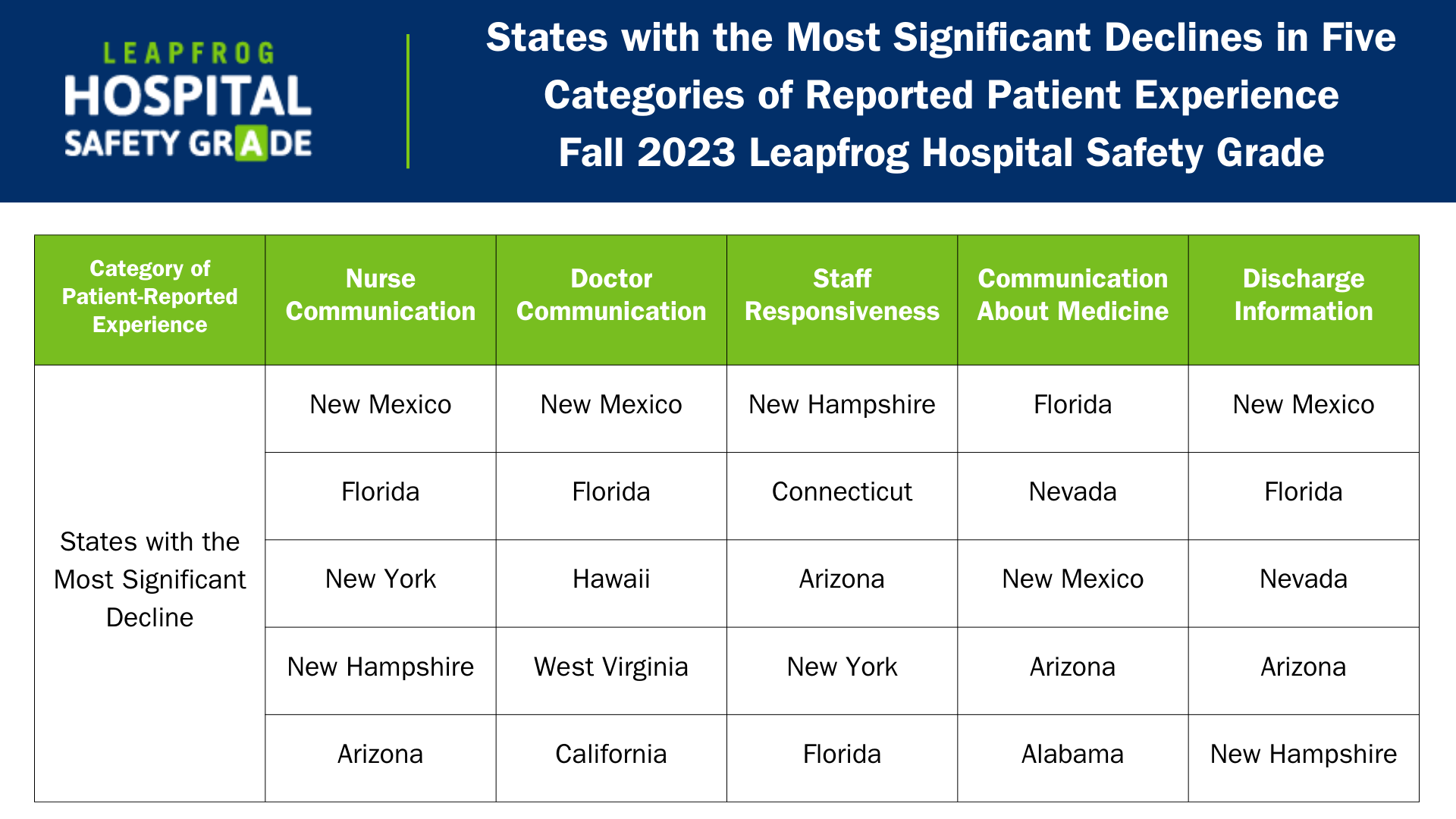National Safety Grades Show Decrease in HAIs in Hospitals
The Leapfrog Group finds there were improved health care-associated infection (HAIs) rates following an earlier spike during the acute phase of the COVID-19 pandemic.

HAIs continue to be challenging for clinicians. Every day, approximately 1 in 31 US patients and 1 in 43 nursing home residents’ contracts at least one infection in association with their healthcare. 1
There are 4 types of HAIs, including Central Line-associated Bloodstream Infection (CLABSI), Catheter-associated Urinary Tract Infections (CAUTI) Surgical Site Infection (SSI) and Ventilator-associated Pneumonia (VAP).2
The Leapfrog Group, a national nonprofit group, released results from its Fall 2023 Hospital Safety Grades, a report on patient safety. They assigned a letter grade to nearly 3,000 general hospitals on how well they prevent medical errors, accidents, and infections.3
The latest grades show hospitals reducing HAIs post-pandemic after significant increases in infection rates during the COVID-19 pandemic.
Courtesy Leapfrog Group

“Now that we have pre- and post-pandemic data for patient safety measures, we are encouraged by the improvement in infections and applaud hospitals for reversing the disturbing infection spike we saw during the pandemic,” said Leah Binder, president and CEO of The Leapfrog Group.
This cycle, nearly 30% of hospitals earned an “A,” 24% earned a “B,” 39% earned a “C,” 7% earned a “D” and less than 1% earned an “F.”
The new grades reflect hospital performance post-pandemic. Nationally, hospitals significantly reduced 3 HAIs—Methicillin-resistant Staphylococcus aureus (MRSA), central line-associated bloodstream infections (CLABSI) and catheter-associated urinary tract infections (CAUTI)—after CLABSI, MRSA, and CAUTI reached a 5-year high during the pandemic.
In the fall 2022 Safety Grade cycle, hospitals experienced a 35% increase in the average standard infection ratios (SIRs) of CLABSI and MRSA from pre-pandemic levels as well as a 20% increase in CAUTI.
The latest data shows that over 85% of hospitals have improved performance on at least 1 of the 3 dangerous infections the Hospital Safety Grade accounts for. That includes:
- 19% of hospitals have improved in all three infection measures,
- 66% of hospitals have improved at least one infection measure, and
- 16% of hospitals have continued to worsen or made no improvement.
Patient Satisfaction
In addition to looking at infections, the Safety Grade collected data on the patient experience, which demonstrated worsening scores for the second year in a row. And all states experienced a significant decline in reported patient experience from the fall 2021 to the fall 2023 Safety Grade.
“It’s deeply concerning that patient reports about their health care experience continues to decline,” Binder said.
Courtesy Leapfrog Group

Leapfrog used 5 patient experience measures that evidence suggests are closely associated with patient safety issues. The scores for the measures are calculated using patient responses to a national and standardized patient survey following a hospital visit. Patients are asked to rate their experience of nurse communication, doctor communication, staff responsiveness, communication about medicine, and discharge information.
Patient experience reports show the most significant declines in the categories of “communication about medicines” and “responsiveness of hospital staff,” both of which correlate with preventable medical errors according to recent studies, Binder reported.
References
1. HAI and Antibiotic Use Prevalence Survey. CDC. Last reviewed February 25, 2022. Accessed November 7, 2023. https://www.cdc.gov/hai/eip/antibiotic-use.html
2. Types of Healthcare-associated Infections. CDC. Last reviewed March 26, 2014. Accessed November 7, 2023. https://www.cdc.gov/hai/infectiontypes.html
3.New Fall 2023 Hospital Safety Grades from The Leapfrog Group Find Improved Infection Rates Following Major Spike During COVID-19 Pandemic. Leapfrog. Press release. November 6, 2023.Accessed November 7, 2023 https://www.hospitalsafetygrade.org/about-our-movement/newsroom/display/1199251
